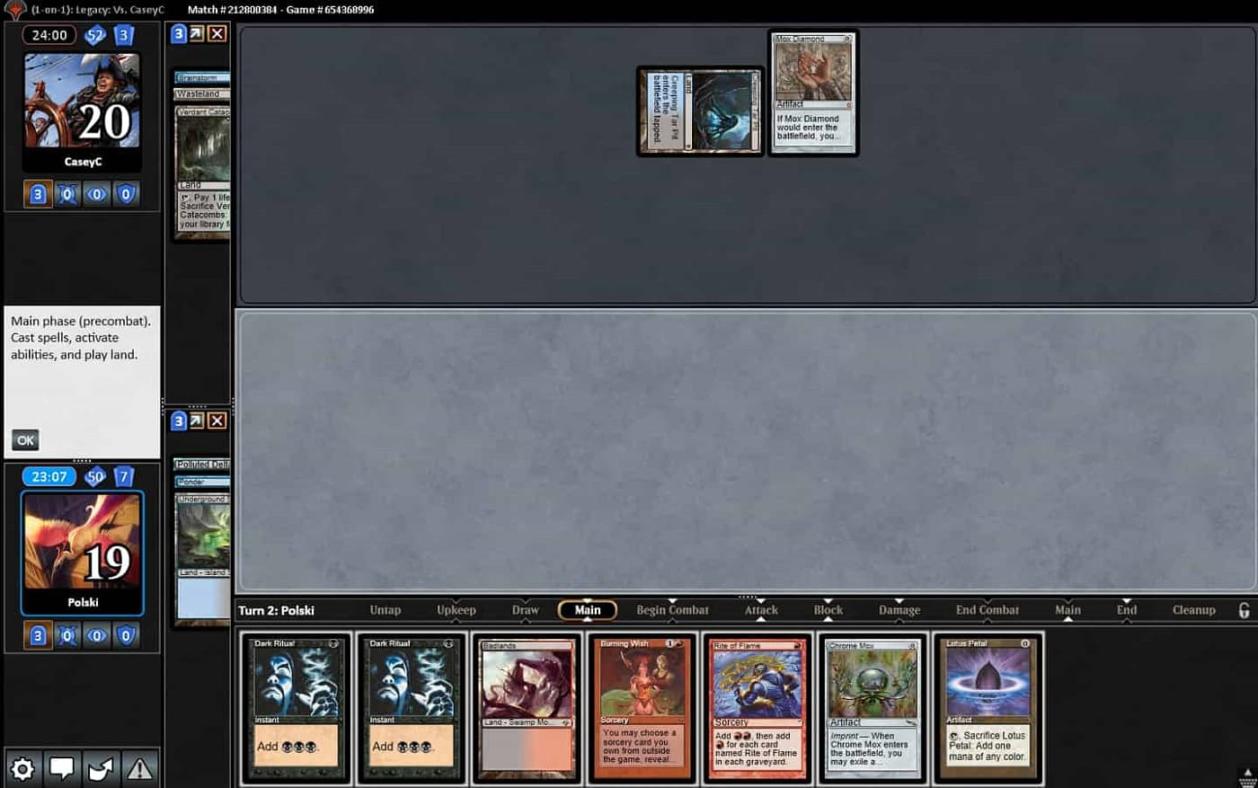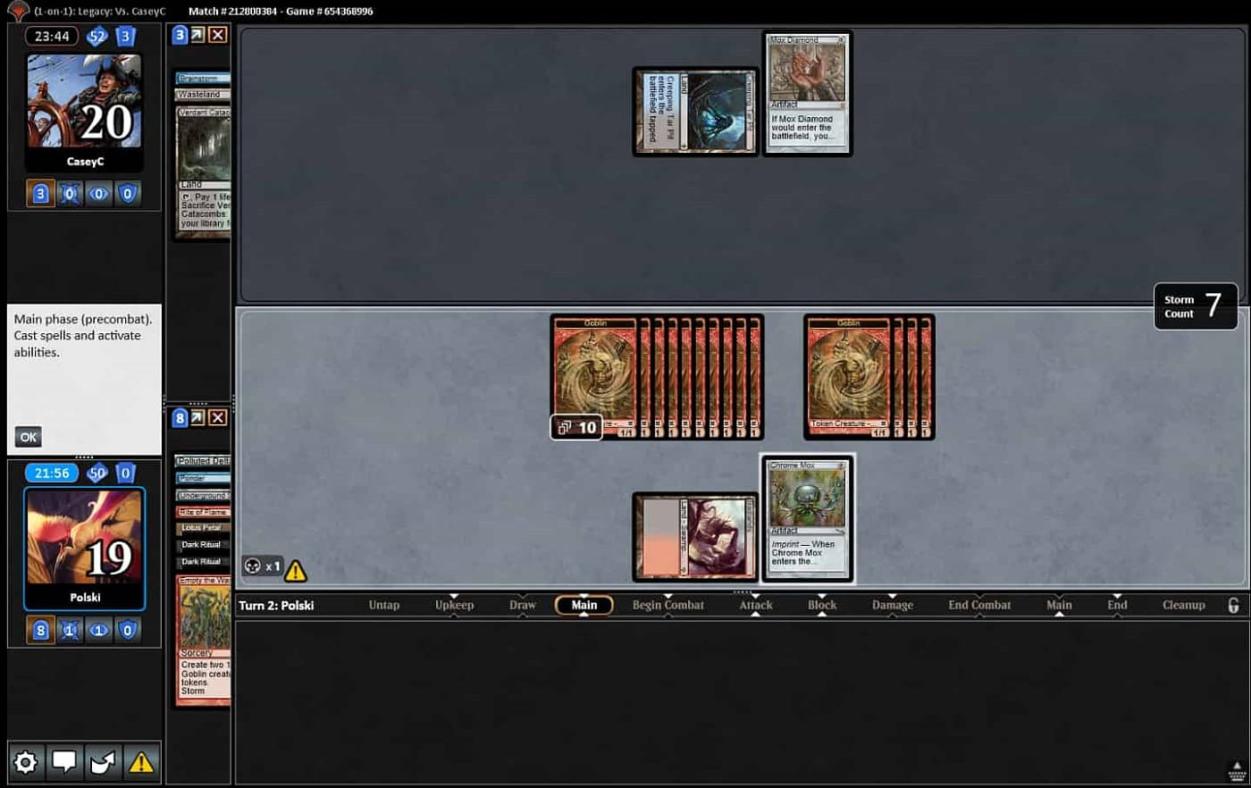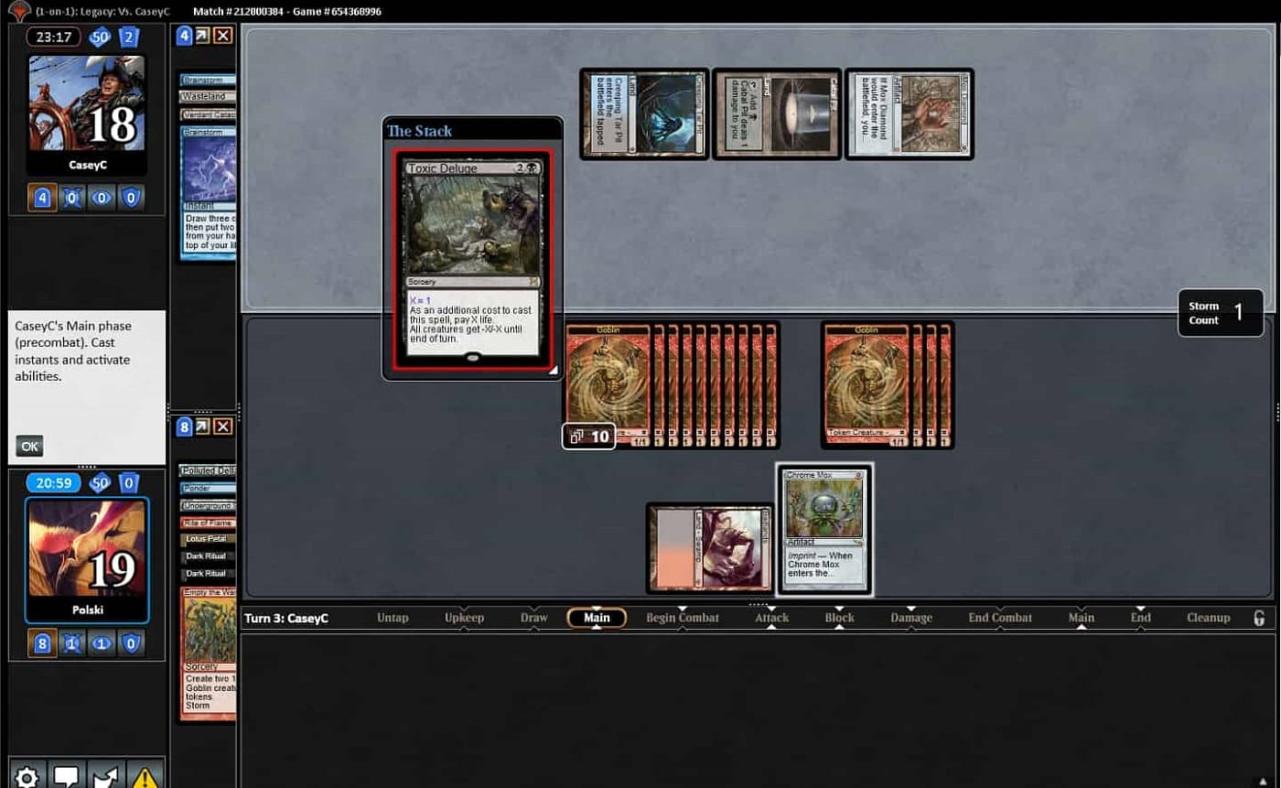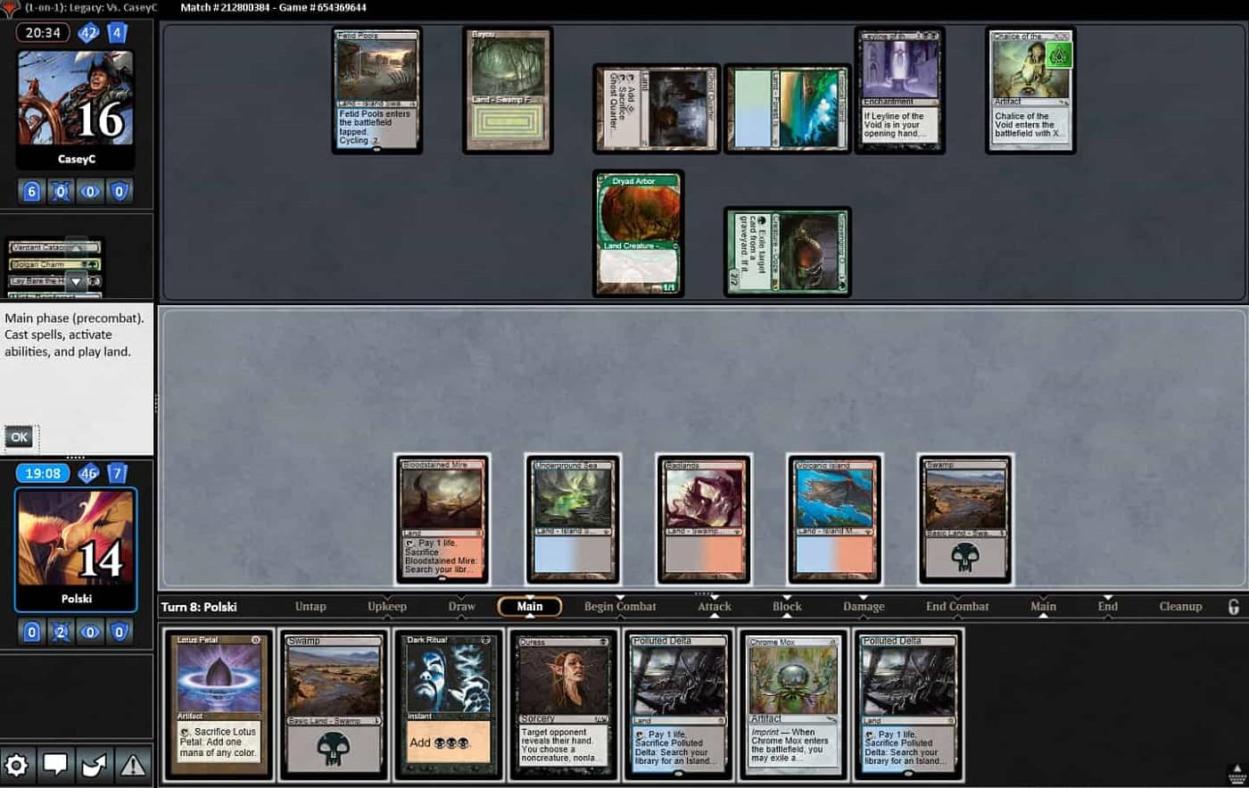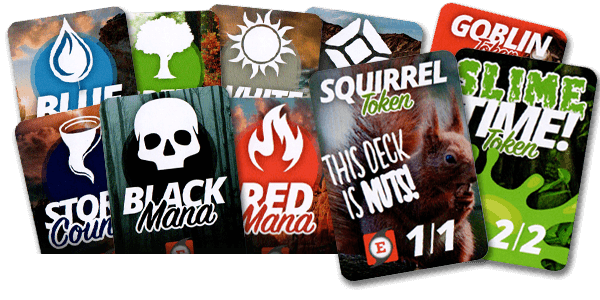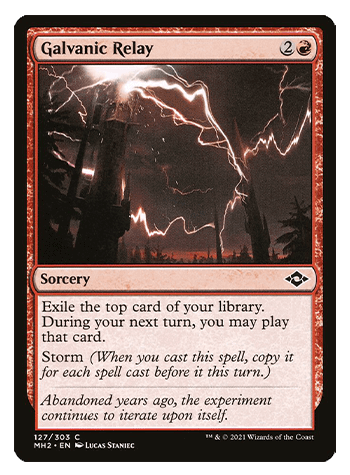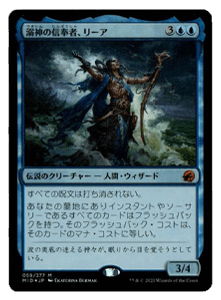UX Landstill has been one of the older decks of the Legacy format. Being around for nearly two decades, older than many players, but has been getting less popular over the past several years. Landstill is a blue-based control deck that gets its name from the combination of Standstill and manlands. This “combo” in play often means neither player is casting any spells, because they don’t want their opponent to draw 3 cards, while you attack them to death with a manland, forcing your opponent to eventually cast a card. Outside of that unique angle, it is a typical control deck with counterspells, discard and removal. It is also blue based but often has different splash colors. Over the years it has been played alongside every 4 colors. The longevity of this strategy has proved it is very good. While it is not a common deck right now people still play it, and every once in a while I do run up against it. Playing against a resolved Standstill can be a tricky task. Because my opponent in the example game was playing a version with black I will focus the article around that, but many of the ideas and thoughts transfer regardless of support color.
How does Landstill matchup against TES?
Force of Will – It’s a blue control deck, so they are obviously going to be playing at least Force of Will as countermagic. They probably will have more counters, but Force of Will will be a minimum, as a 4 of. Force of Will is one of legacy’s most played cards and something we should be fairly familiar with playing against. When playing against a blue deck you just have to know when you can afford to wait to try and play around it vs when you should just jam and cross your fingers that they don’t have one in hand. There really aren’t any hard rules for this, but the more practice the better you will be at making this judgment call. This will be one of their strongest cards against us and other combo decks because it can completely stop us from comboing off and the fact it’s free means there’s never a window of opportunity to combo before they can cast it.
Standstill, Mishra’s Factory – This is their namesake part of the deck and what separates Landstill from any other control deck. Playing against a resolved Standstill is tricky for any deck, but for us, it’s usually the turn we are ready to combo off. Sacrificing their Standstill before our combo turn is worse because it allows them to have more turns to use any cantrips or other cards that they draw off of the Standstill. We have to hope they draw nothing relevant off the Standstill or just a counterspell that we can take with a discard spell. We do not want to wait it out and try to fill up our hand. In most scenarios the longer the game goes the worse we are and Standstill pushes that even further.
Wasteland – Pure control decks in Legacy rarely run Wasteland, but this is one that always does. Being able to Wasteland problematic lands, opposing manlands, and just to slow the opponent down is crucial to this archetype. Against us it’s a pretty big deal because we don’t associate control decks as Wasteland decks, so we often just fetch up dual lands, but if you aren’t aware of the Standstill decklist then this could cost you the game. We can’t be as liberal fetching out our dual lands. Definitely keep this in mind when evaluating whether you can afford to fetch for a basic land or not.
Thoughtseize – If they have black mana then it’s a guarantee they are playing an array of discard spells, with Thoughtseize being one of them. Against Storm discard spells are often better than counterspells at disrupting us because they can be cast before our combo turn in order to buy them time. Being able to slow TES down is a good angle at trying to win since Storm is less likely to win the longer the game goes vs a control deck. It’ll also potentially give them the necessary time to find more disruption or a Standstill. In order for us Storm players to better beat discard spells it’s important we are protecting our most important cards by using cantrips, to keep them on the top of our library, or playing our cards like Lion’s Eye Diamond to protect them.
Toxic Deluge – Somewhere in the 75 control decks play wrath effects. If they’re playing black then they will be including Toxic Deluge. This is important to note when we play Empty the Warrens in our deck. While control decks don’t play a high number of this type of effect it is definitely worth noting, so we need to pick and choose wisely when we go for Empty the Warrens.
Deck List
- 4 Burning Wish
- 4 Infernal Tutor
- 4 Brainstorm
- 4 Ponder
- 4 Thoughtseize
- 4 Duress
- 1 Empty the Warrens
- 1 Ad Nauseam
Ways to win this matchup
Killing Them and Our Game Plan
Traditionally against blue decks we aim to slow down so we don’t play into counterspells and can setup to beat them, but recently that has not been the case. We have had more success trying to play fast before they can setup and find their counters, discard, or permanants. They also have been playing more card advantage than us, so trying to play the longer game is asking to lose. In the first couple turns of the game we want to be prioritizing our basics, because of the presence of Wasteland. When trying to set up for a fast kill the recipe often looks something like playing out a Hope of Ghirapur, casting discard spells to clear the way, or using cantrips to find our missing pieces to combo off immediately. The key turns for both players are going to be turns 2-4, and what really happens during these turns will usually decide the winner. It is equally up to the opponent to make sure they have quick interaction and understand that they don’t have many turns to try to disrupt us, through discard and Hope of Ghirapur, or find counterspells. Another angle that Landstill has is obviously the card Standstill. An early Standstill could give them the card advantage they need to overwhelm us with disruption or to recover from our discard spells. This is one of the many reasons why we need to be trying to a quick kill. If we take our time and try to play the longer game then all it could take is a Standstill to end the game for us.
Because they are a control deck with wrath effects we need to prioritize Tendrils of Agony as our main win condition. Empty the Warrens is still fine, but we do have to understand it is a liability. Understanding when we should go for which storm card is a skill in this matchup because it is a balance between a quick Empty the Warrens and waiting an extra turn or 2 for a Tendrils of Agony. It can make a big difference.
Sideboarding
-1 Chrome Mox -1 Ponder -1 Duress
+3 Hope of Ghirapur
Regardless of what color combination of Landstill they are playing they are going to be blue based, which means lots of counterspells. Because of this, Hope of Ghirapur is going to be one of our best cards in the matchup. There’s also a good chance the opponent cuts several removal spells from their deck making it just that much better. Cutting the Duress may not be as clear on why we remove it, but it’s because with the Hope of Ghirapur we just have too many reactive cards. We still need a high density of combo pieces and we don’t want to be cluttered with disruptive cards. It just becomes too many. Chrome Mox is cut because if they’re playing black mana then that comes with discard spells, which is horrible for Chrome Mox. We can’t have lots of card disadvantage cards against discard spells. It’s just playing into their game plan. We do need to keep some of them in though, because like in what I mentioned in the previous section we need to keep speed in mind. We need to have the resources to be able to combo off early and we don’t just want to sideboard into a slower deck. When shaving cards Ponder is usually on that list for being one of the weaker cards. One of the most asked questions is why do we keep Empty the Warrens in our deck when we know they are going to have sweeper effects? And the reasons is because of speed. Empty the Warrens is one of our fastest ways to win and comboing that plan with Hope of Ghirapur is what I have found to be a successful game plan. We have discard spells to try and take their Toxic Deluge, and they play so few copies that sometimes just putting goblins onto the table on the first turn does not give them enough time to even find them.
Game Play
Onto an example game!
My opponent wins the die roll and starts the match off with just Creeping Tar Pit and pass. I fetch for an Underground Sea and cast Ponder and pass back. On my opponent’s second turn they also cast Brainstorm into a Wasteland destroying my only land and then plays a Mox Diamond. I take my draw step and now I have a couple decisions to make.
A few things I note here is why did my opponent play their Mox Diamond if they weren’t going to spend their mana? Maybe to leave up a counterspell. I can Burning Wish for Empty the Warrens here for 14 goblins or I can try to wait a couple turns to look for another tutor or discard spell. If I decide to wait then do my chances of winning the game go up? I don’t think so. Mainly because I don’t have any cantrips or know what is on the top of my library, so there’s no way of increasing my chances of finding a discard spell quickly. I still am not sure why my opponent played their Mox Diamond, but I want to go for Empty the Warrens here and hope everything resolves.
It resolves. I feel pretty good about my odds of winning here since they have very few wrath effects in their deck, if any, and probably can’t play enough creatures to try to stabilize. I pass the turn back, but on my end step they use their Mox Diamond to cast a Brainstorm. On their turn they play another land and…
Tha’ts unfortunate. I’m sure they don’t play many copies, and I probably would have won if it wasn’t for this Toxic Deluge.
0-1
I sideboard exactly how I mentioned above and we are off to game 2 being on the play. Unfortunately, my opening hands very bad and I take a couple mulligans with a land heavy hand. My next couple draw steps are more lands and I just flood out while my opponent plays several permanents that add up to being too much to win through.
This wasn’t that good of a second game. I also asked the opponent a couple of questions and they had Life from the Loam and more permanents in their sideboard compared to more traditional UX Landstill decks. If there was another game I may have considered a couple bounce spells because of how many permanent hate cards they had in his sideboard.
This didn’t turn out to be a great match for me.
0-2
This example match was a more unique variant to Landstill that is not traditional, but it still demonstrated some of the lines or concerns that I had to pay attention to during the match. I think one of the biggest takeaways from this example was how we can’t always look at “stock” decklists and automatically think people are playing that exact 75. We have to assume they could be playing a slightly different variation or consider cards that they could be playing as well. This type of thinking will help us become better magic players by thinking about all possibilities that the opponent could be playing and how do we best win through those scenarios. By doing this we also learn to adapt and change how we play or sideboard based on the opponent’s decklist and not the stock decklist that we expect to play. Afterall we are playing against only 1 opponent and at the time they are the only ones who matter, so regardless of how unique their deck is or whether it’s a brew or a deck from 20 years ago it doesn’t matter. We need to be thinking on the fly on how we beat our current opponent. Hopefully, there were a few takeaways on how to approach a less meta deck of the format. Just remember to not get stuck in autopilot when playing storm, or any deck in magic, we always want to be playing against our current opponent.








